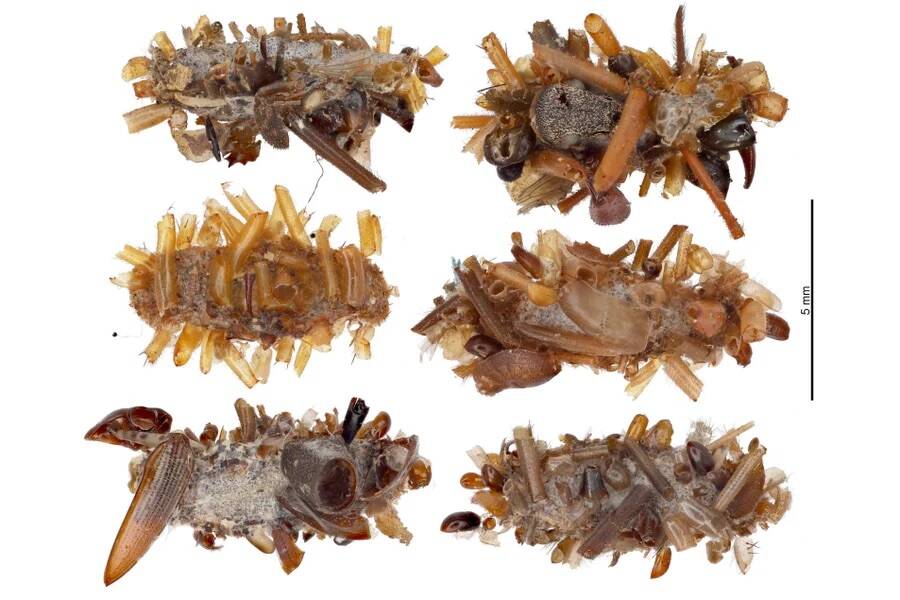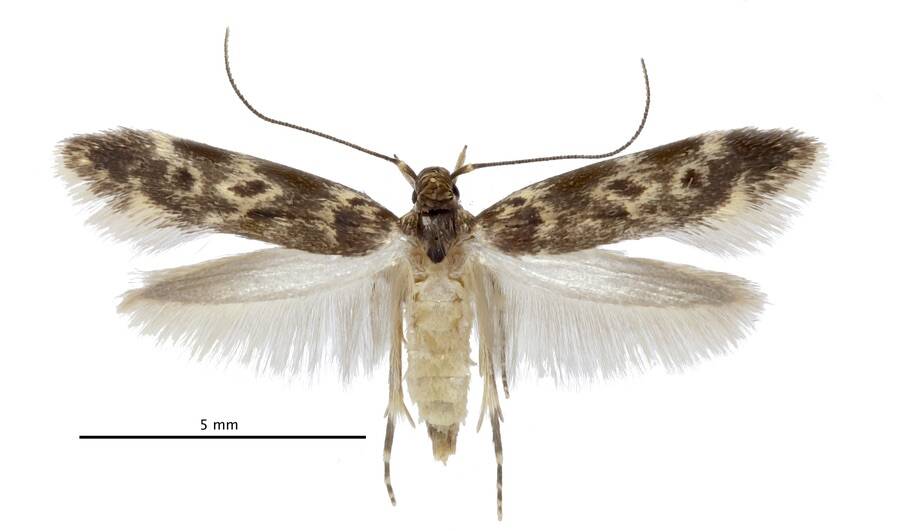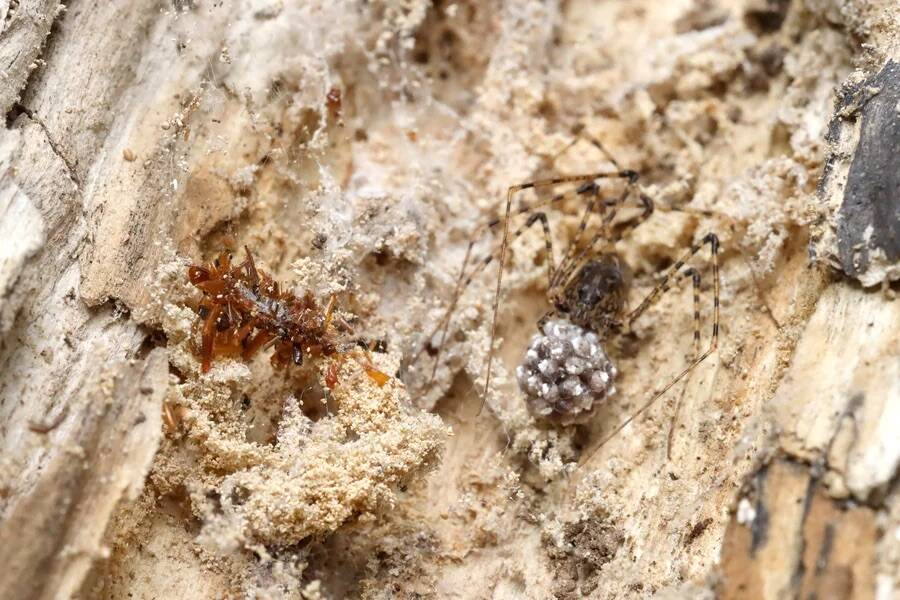This “bone collector” caterpillar is found only in a six-square-mile area on the Hawaiian island of Oahu.
Rubinoff Lab , Entomology Section , University of Hawaii at ManoaA video recording of the Hawaiian “ bone collector ” cat shows how it creates its camouflage .
caterpillar are remarkable creatures , but a especial species newly identify in the journalSciencemight just take the cake for foreignness .
Dubbed the “ bone collector , ” this caterpillar mintage scrounge the remains — and sometimes the alive bodies — of insects from wanderer webs , carefully rotating them in an almost curated way so as to wear off their body parts as camouflage . The carnivorous cat was found on the Hawaiian island of Oahu and is the first known coinage to engage in this odd behaviour .

Rubinoff Lab, Entomology Section, University of Hawaii at ManoaA video of the Hawaiian “bone collector” caterpillar shows how it creates its camouflage.
The Discovery Of The Bone Collector Caterpillar On Oahu
Rubinoff Lab , Entomology Section , University of Hawaii at ManoaAs far as researchers sleep together , the osseous tissue collector is the only species of its pedigree .
“ I just could n’t believe it . The first couple of multiplication you recover that , you think it ’s fuck off to be a one - off — it ’s got to be a mistake , ” study lead generator Daniel Rubinoff toldScientific American . “ I ’ve been expect at it for over a decade and itstillblows my mind . ”
scientist first observed the disguise - craft cat around 17 years ago , but as Rubinoff explained , the behavior seemed more like an anomalousness than a trait specific to the mintage . However , since 2008 , Rubinoff and his workfellow have observed 62 dissimilar off-white collector , all within a six - square - air mile range .

Rubinoff Lab, Entomology Section, University of Hawaii at ManoaAs far as researchers know, the bone collector is the only species of its lineage.
According tothe study published inScience , the caterpillars are only found on a specific mountain range on the island of Oahu , and they reside solely in spider World Wide Web . They ’re part of theHyposmocomagenus of moth that are aboriginal to Hawaii .
Like otherHyposmocomacaterpillars , the off-white aggregator spends its larval stage in a protective silk eccentric . However , while its cousins adorn themselves with sticks and shells for camouflage , the pearl collector decorates its suit with weevil heads , mallet belly , and slough wanderer exoskeletons .
Once Rubinoff and his fellow research worker realized that these macabre disguises were typical for bone accumulator caterpillars , they coiffe out to determine why .

Rubinoff Lab, Entomology Section, University of Hawaii at ManoaAn adult “bone collector” moth.
Why Bone Collectors Developed This Bizarre Habit
Rubinoff Lab , bugology Section , University of Hawaii at ManoaAn grownup “ bone aggregator ” moth .
Rubinoff consider this caterpillar mintage ’ behaviour is probably an evolutionary wont . Like other cat , osseous tissue collectors finally wrench into moths , but these specific moths lie their eggs in tree or rock cavities enclosed by wanderer webs . When a caterpillar hatch , it needs to “ camouflage itself from the wanderer landlord , ” Rubinoff order .
He called it a “ decorate or die situation , ” as a normal protective layer “ might not be enough to barricade the spider from trying to deflate the case and eat the caterpillar . ” Plus , if another bone collector were to attempt to dwell the same nooks and crannies , they might wind up eating each other .

Rubinoff Lab, Entomology Section, University of Hawaii at ManoaA bone collector in a spider web.
The wanderer connection also provides another benefit for the caterpillars : intellectual nourishment . Any leftovers from a spider ’s meal — the diffuse tissue of a fly or the backstage of a beetle , for instance — can sustain os collector . So , they ’ll eat what they can of the dead bugs , use the remaining minute for a “ case , ” and live gluttonously for a few months before seal off that protective typeface and turning it into their cocoon .
Rubinoff Lab , Entomology Section , University of Hawaii at ManoaA bone collector in a spider connection .
Rubinoff clarified , however , that the caterpillar are n’t considered sponge , nor do they have a symbiotic relationship with spiders . “ That just give you a sensation of how they go after solid food — and recognise that there ’s nutrient inside things that maybe do n’t calculate like food for thought . ”
hereditary analytic thinking show that the bone collector come forth around six million twelvemonth ago , making it even older than the island it inhabits . This think that its genic ascendent likely trip to Oahu from a dissimilar island , but the os collector is still the only make out species in its line .
“ I ’m really glad we strike it before it went extinct , ” Rubinoff said .
After reading about the creepy bone aggregator caterpillar , observe seven othernightmarish insects . Then , learn about thegiant waterbug ’s improbably painful snack .